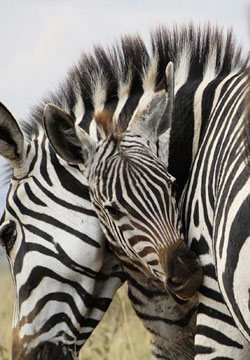NAIROBI DESCENDS UPON THE KITENGELA CYCLING FOR WILDLIFE
February 21, 2015
44 Cyclists and over 50 spectators descended upon the Kitengela in the Bicycles for Wildlife Challenge organized by The Wildlife Foundation and Xtrym Adventures in collaboration with the Kenya Wildlife Service. The challenge which seeks to support Community Conservation efforts was the inaugural event and subsequently, annual challenges will be organized and funds raised will go towards various community projects within the community conservancy to be established through the same event. The area remains critical for the survival of Nairobi National Park whose relatively small area of 117km2 faces massive pressure from the rapid urbanization of Nairobi and urban sprawl in Kitengela. A successful economic model for this conservancy which is the immediate neighbor to the south of Nairobi National Park will set precedence for the establishment of a series of conservancy in the Kitengela wildlife dispersal area thereby securing more space and migration routes for the wildlife of Nairobi National Park.
Mark Kamau conquered the 23km terrain in just under 2 hours to come first in a time of 1:59:05 hours and was closely followed by Brain Maugo and James Saitoti who came in 2nd and 3rd respectively in the men’s race. Ingrid Kruiter finished first in the women’s race in 2:08:34hours and was followed by Stacy Wairimu and Acacia Aggarwal. Oscar Mann was the senior most rider and at 65 years of age, he beat 39 other cyclists to come in 5th. The children’s team was represented by brothers Chris and Kenya Muchai and their cousin Mituri Kiama who braved the scorching sun to finish the 23km challenge.
The non-cyclists had an opportunity to walk through a nature trail in the proposed conservancy area and encountered several wildlife species which cross over from the park into the community lands sharing pasture with the Maasai cattle and sometimes the predators like lions and leopards attacking bomas and killing livestock. The Southern boundary of Nairobi National Park remains open and human-wildlife conflict is common but through the programs of The Wildlife Foundation, the pastoral communities living south of the park co-exist with these wildlife and have become guardians of the same working closely with the Kenya Wildlife Service to protect them.
The Wildlife Foundation has been working in the area for over 15 years and some of its Payment for Ecosystem Services (PES) programs include the Wildlife Conservation Lease Program which put over 55,000 acres of land in the Athi Kaputiei under conservation effectively increasing the space available for wildlife to almost double of Nairobi National Park’s 28,000 acres. Before the coming into law of the Wildlife Act 2014 which now makes provision for compensation to pastoralists who lose their cattle to wildlife through predation, The Wildlife Foundation was already running a Consolation Program which paid the pastoralists for their loses and this significantly contributed to reducing human-wildlife conflict in the area. The organization is now working with Kenya Wildlife Service and other donors to install the recently invented Turere Lion Lights which have not only reduced human-wildlife conflicts but saved the pastoralists their herds with cases of predation having significantly reduced over the last one year since the installation of the Lion Lights began.
Bicycles for Wildlife seeks to also create awareness among the urban population about Nairobi National Park effectively bringing on board more members of the public to participate and support Community Wildlife Conservation efforts thereby protecting the park which remains a unique gem and a natural heritage of the people of Kenya and is among the top 5 parks in Kenya generating revenue through tourism. The park is also listed among the top 10 most spectacular parks in the country and one of the most visited especially by local tourists.




































Leave a Reply